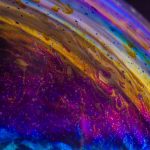Mycosporine-like amino acids (MAAs) are a group of natural compounds produced by various organisms, primarily marine species like algae, corals, and cyanobacteria, to protect themselves from harmful ultraviolet (UV) radiation. These compounds absorb UV radiation and are known for their photoprotective and antioxidant properties.
Here are some of the most well-known MAAs:
1. Mycosporine-glycine
- Absorption Range: UV-B (310 nm)
- Function: One of the simplest MAAs, it provides protection against UV-induced damage and also has antioxidant properties, helping to neutralize free radicals generated by UV exposure.
2. Palythine
- Absorption Range: UV-A (320–360 nm)
- Function: Known for its strong UV-A absorption, palythine is highly photostable and offers protection against deep-penetrating UV rays, which are responsible for skin aging and cellular damage.
3. Shinorine
- Absorption Range: UV-A/UV-B (334 nm)
- Function: Shinorine offers broad-spectrum UV protection by absorbing both UV-A and UV-B radiation. It is widely studied for use in skincare formulations due to its efficiency in UV absorption.
4. Porphyra-334
- Absorption Range: UV-A (334 nm)
- Function: This MAA is commonly found in red algae (like Porphyra species) and provides strong UV-A protection. It is notable for its high photostability, making it useful in protecting cells from oxidative damage.
5. Asterina-330
- Absorption Range: UV-A/UV-B (330 nm)
- Function: This MAA is found in marine organisms like starfish and offers protection from UV radiation. Like other MAAs, it absorbs UV rays and helps in mitigating damage to cellular structures.
6. Methylated Mycosporine-glycine
- Absorption Range: UV-B (310 nm)
- Function: This methylated version of mycosporine-glycine enhances UV protection and may also improve the stability of the molecule under UV exposure.
7. Palythinol
- Absorption Range: UV-A (320–350 nm)
- Function: Similar to palythine, palythinol offers UV-A protection. It is structurally related to palythine and is also found in marine organisms like corals.
8. Usujirene
- Absorption Range: UV-A (357 nm)
- Function: Found in marine cyanobacteria and algae, usujirene provides protection primarily from UV-A radiation and is often studied alongside other MAAs for its antioxidant activity.
9. Zwittermycosporine
- Absorption Range: UV-A/UV-B (310–334 nm)
- Function: This MAA provides broad-spectrum UV protection, and its zwitterionic structure enhances its water solubility, making it suitable for aquatic organisms in high UV exposure environments.
10. Sarcophytene
- Absorption Range: UV-B (310 nm)
- Function: Found in corals and other marine organisms, sarcophytene is believed to provide UV protection and is also studied for potential anti-inflammatory properties.
Additional Features of MAAs:
- Photostability: MAAs are highly photostable, meaning they do not degrade quickly when exposed to UV light, which is a key property for effective sun protection.
- Antioxidant Activity: Many MAAs, besides providing UV protection, also serve as antioxidants, neutralizing reactive oxygen species (ROS) produced by UV exposure.
- Water Solubility: Most MAAs are water-soluble, which helps organisms living in aquatic environments efficiently produce and utilize them for UV protection.
These compounds, including palythine, have garnered interest for their potential use in developing natural, environmentally friendly sunscreens and other cosmetic products.
Commercial Uses
Some mycosporine-like amino acids (MAAs) are starting to be incorporated into cosmetics and sunscreens, although their commercial use is still in the early stages. The natural UV-protective properties of MAAs, along with their antioxidant effects, have sparked interest in the skincare and cosmetics industry. However, as of now, palythine and other MAAs are not yet widespread in mainstream products but are being developed and included in niche, natural, or eco-friendly sunscreen formulations.
Commercial Use of MAAs in Cosmetics
1. Shinorine
- Brands/Products: Shinorine has been commercialized as a UV-protective ingredient. It is one of the more commonly studied MAAs due to its ability to absorb both UV-A and UV-B radiation. Some companies in the eco-friendly or natural skincare sector are exploring its use in sunscreen formulations, although specific mainstream brand names are limited at the moment.
- Examples: Companies specializing in marine biotechnology, like Mibelle Biochemistry, have developed products containing shinorine, such as HectSUN, which includes MAAs as bio-based UV filters.
2. Porphyra-334
- Brands/Products: Extracts from algae, particularly red algae like Porphyra, which contain porphyra-334, are used in some cosmetic formulations for their UV-absorbing properties. These extracts are found in products marketed as “algae-based sunscreens” or “marine skincare.”
- Examples: Some companies producing marine-based cosmetic ingredients have formulations that contain porphyra-334, often labeled as part of seaweed or algae extracts in anti-aging creams and sunscreens.
Palythine in Commercial Products
Palythine is recognized as a promising UV-protective compound, but it has yet to make a significant breakthrough in mainstream commercial skincare products. The use of palythine is more likely found in experimental or high-end eco-friendly cosmetic lines, often marketed for their natural and sustainable UV protection.
- Research and Development: Companies and research groups focusing on sustainable and reef-safe sunscreens are exploring palythine as an ingredient due to its non-toxic nature and biodegradability. Brands in the early stages of incorporating MAAs like palythine typically emphasize natural, marine-derived formulations aimed at minimizing the environmental impact of sunscreens on coral reefs.
- Marine-Derived Brands: Some niche, eco-conscious skincare brands are beginning to develop products containing marine ingredients, including MAAs, for their antioxidant and sun-protective benefits. While palythine may not yet be listed as a primary ingredient in most commercial products, it may appear as part of marine extracts, particularly in high-end or specialty products marketed for UV protection and skin health.
Reasons for Limited Commercialization
The reason MAAs like palythine have not yet seen widespread use in cosmetics could be due to:
- Cost and Availability: The extraction and production of MAAs, including palythine, from natural sources can be expensive and is still being optimized for large-scale commercial use.
- Regulatory Hurdles: As new, natural compounds, MAAs may face lengthy regulatory approval processes in different regions before they can be widely used in cosmetics and sunscreens.
- Consumer Awareness: Although MAAs offer natural UV protection, synthetic UV filters are more widely recognized and understood by consumers. As awareness of reef-safe, eco-friendly sunscreens grows, the demand for MAAs like palythine may increase.
Potential Future Developments
As the demand for natural, reef-safe sunscreens and cosmetic ingredients grows, MAAs, including palythine, are expected to gain more traction. Research continues into developing cost-effective and efficient methods of synthesizing these compounds for broader commercial use. These materials are ideal candidates for eco-conscious skincare due to their non-toxic, biodegradable, and highly effective UV protection properties.


Leave a Reply